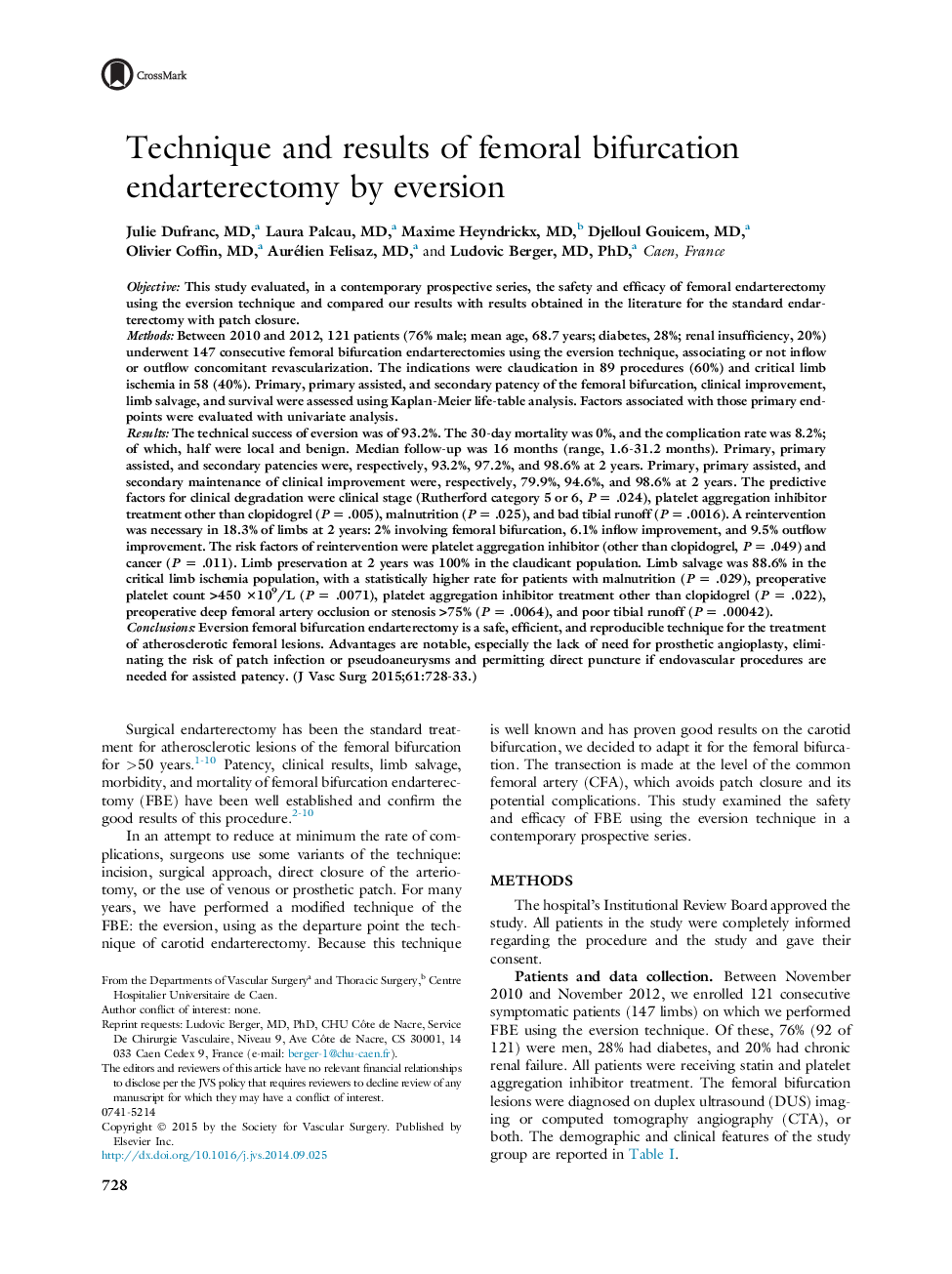| کد مقاله | کد نشریه | سال انتشار | مقاله انگلیسی | نسخه تمام متن |
|---|---|---|---|---|
| 2988644 | 1179824 | 2015 | 6 صفحه PDF | دانلود رایگان |
ObjectiveThis study evaluated, in a contemporary prospective series, the safety and efficacy of femoral endarterectomy using the eversion technique and compared our results with results obtained in the literature for the standard endarterectomy with patch closure.MethodsBetween 2010 and 2012, 121 patients (76% male; mean age, 68.7 years; diabetes, 28%; renal insufficiency, 20%) underwent 147 consecutive femoral bifurcation endarterectomies using the eversion technique, associating or not inflow or outflow concomitant revascularization. The indications were claudication in 89 procedures (60%) and critical limb ischemia in 58 (40%). Primary, primary assisted, and secondary patency of the femoral bifurcation, clinical improvement, limb salvage, and survival were assessed using Kaplan-Meier life-table analysis. Factors associated with those primary end-points were evaluated with univariate analysis.ResultsThe technical success of eversion was of 93.2%. The 30-day mortality was 0%, and the complication rate was 8.2%; of which, half were local and benign. Median follow-up was 16 months (range, 1.6-31.2 months). Primary, primary assisted, and secondary patencies were, respectively, 93.2%, 97.2%, and 98.6% at 2 years. Primary, primary assisted, and secondary maintenance of clinical improvement were, respectively, 79.9%, 94.6%, and 98.6% at 2 years. The predictive factors for clinical degradation were clinical stage (Rutherford category 5 or 6, P = .024), platelet aggregation inhibitor treatment other than clopidogrel (P = .005), malnutrition (P = .025), and bad tibial runoff (P = .0016). A reintervention was necessary in 18.3% of limbs at 2 years: 2% involving femoral bifurcation, 6.1% inflow improvement, and 9.5% outflow improvement. The risk factors of reintervention were platelet aggregation inhibitor (other than clopidogrel, P = .049) and cancer (P = .011). Limb preservation at 2 years was 100% in the claudicant population. Limb salvage was 88.6% in the critical limb ischemia population, with a statistically higher rate for patients with malnutrition (P = .029), preoperative platelet count >450 ×109/L (P = .0071), platelet aggregation inhibitor treatment other than clopidogrel (P = .022), preoperative deep femoral artery occlusion or stenosis >75% (P = .0064), and poor tibial runoff (P = .00042).ConclusionsEversion femoral bifurcation endarterectomy is a safe, efficient, and reproducible technique for the treatment of atherosclerotic femoral lesions. Advantages are notable, especially the lack of need for prosthetic angioplasty, eliminating the risk of patch infection or pseudoaneurysms and permitting direct puncture if endovascular procedures are needed for assisted patency.
Journal: Journal of Vascular Surgery - Volume 61, Issue 3, March 2015, Pages 728–733
